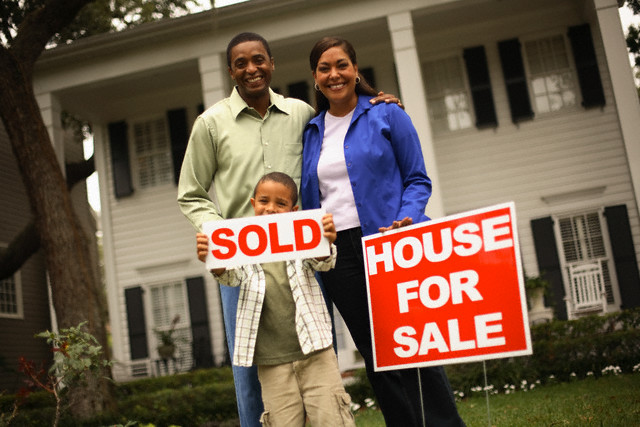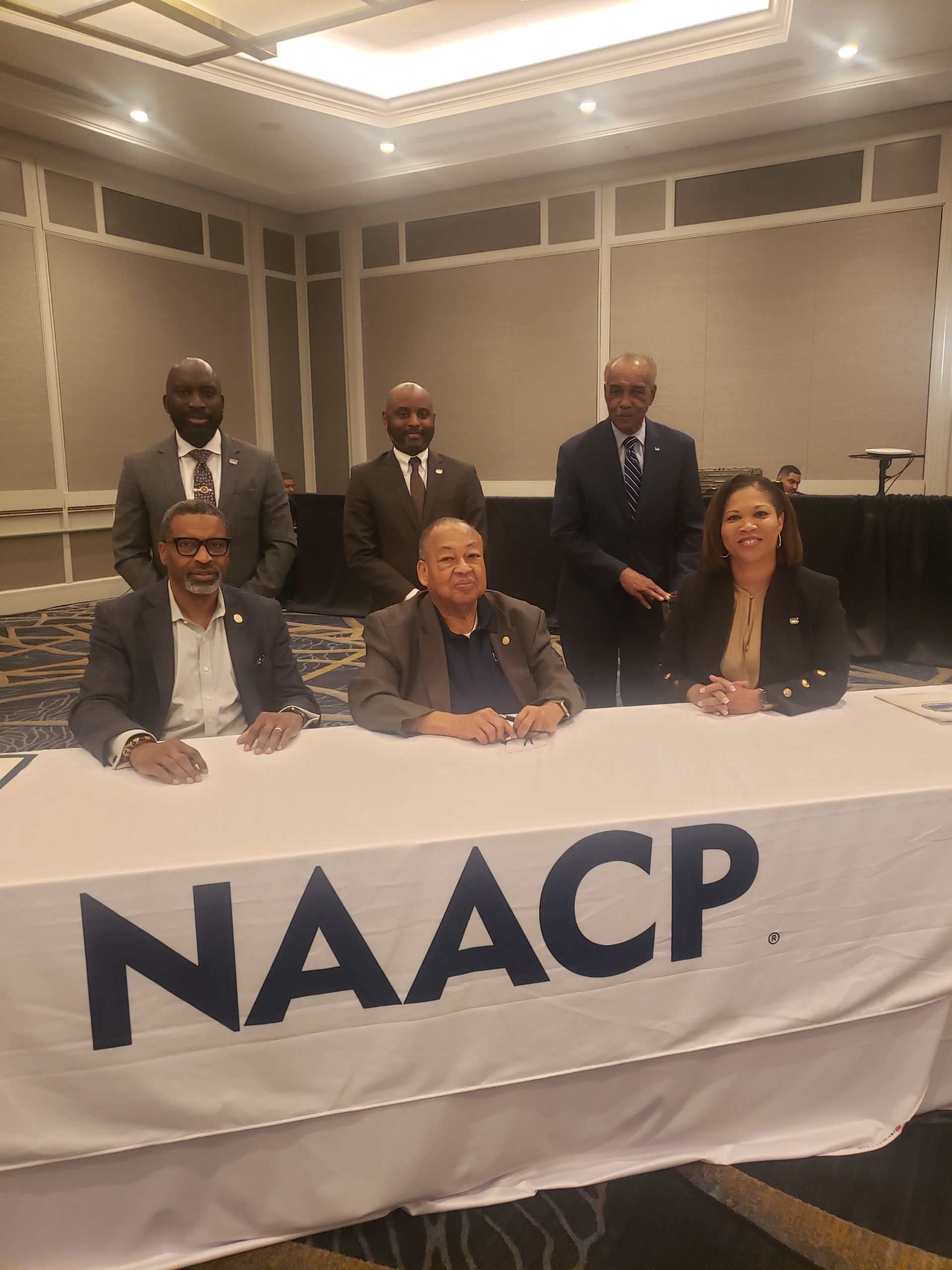Against Black Homeownership

The real estate market is so structured by race that black families will never come out ahead.
In January 1973, George Romney, Nixon’s enigmatic Secretary of Housing and Urban Development, administered an open-ended moratorium on its 1968 initiatives to open up single-family homeownership to low-income borrowers by providing government-backed mortgages. The experiment to make homeownership accessible to everyone ended abruptly with massive foreclosures and abandoned houses, but the questions ignited by these policies persisted. Some analysts insisted that the failure of HUD’s homeownership programs was proof positive that poor people were ill equipped for the responsibilities of homeownership. And they insisted that it more specifically implicated low-income African Americans as “incapable” homeowners. Others pointed to HUD’s obvious mismanagement of these programs as the real culprit in their demise, and, importantly, how the programs gave an industry already known for its racial bias new opportunities to exploit low-income African-Americans. But the lessons from HUD’s experiment were muddled by other economic sensibilities, including the commitment to private property and the centrality of homeownership to the American economy.
African Americans experience homeownership in ways that rarely produce the financial benefits typically enjoyed by middle-class white Americans.
Today, homeownership, even for low-income and poor people, is reflexively advised as a way to emerge from poverty, develop assets, and build wealth more generally. The historic levels of wealth inequality that continue to distinguish African Americans from whites are powerful reminders of how the exclusion of Blacks from this asset has generationally impaired Black families in comparison with their white peers. Owning a home as a way to build wealth is touted as an advantage over public or government-sponsored housing. It grounds the assumption that it is better to own than rent. And the greatest assumption of all is that homeownership is the superior way to live in the United States. This, of course, is tied to another indelible truth that homeownership is a central cog in the U.S. economy. Its pivotal role as an economic barometer and motor means that there are endless attempts to make it more accessible to ever-wider groups of people. While these are certainly statements of fact, they should not be confused as statements on the advisability of suturing economic well-being to a privately owned asset in a society where the value of that asset will be weighed by the race or ethnicity of whoever possesses it.
The assumption that a mere reversal of exclusion to inclusion would upend decades of institutional discrimination underestimated the investments in the economy organized around race and property. The concept of race and especially racial inferiority helped to establish the “economic floor” in the housing market. One’s proximity to African Americans individually, as well as to their communities, helped to determine the value of one’s property. This revealed another reality. Markets, as in the means by which the exchange of commodities is facilitated, do not exist in vacuums, nor do abstract notions of “supply and demand” dictate their function. Markets are conceived and constituted by desire, imagination, and social aspirations, among other malleable factors. This does not mean that markets are not real, but that they are not shaped by need alone. They are shaped by political, social, economic, and in the case of housing, racial concerns. And in the United States, these market conditions were shaped and stoked by economic actors that stood to gain by curtailing access to one portion of the market while then flooding another with credit, capital, and indiscriminate access to distressed and substandard homes.
HUD’s crisis in its homeownership programs in the 1970s reveal deeper and more systemic problems with the pursuit of homeownership as a way to improve the quality of one’s life. It is undeniable that homeownership in the United States has been “one of the important ways in which Americans have traditionally acquired financial capital” and that the “tax advantages, the accumulation of equity, and the increased value of real estate property enable homeowners to build economic assets. . . . These assets can be used to educate one’s children, to take advantage of business opportunities, to meet financial emergencies, and to provide for retirement.” Investment in homeownership, and its role in the process of the personal accumulation of capital, has been fundamental to the good life in the United States.
Markets are not shaped by need alone. They are shaped by political, social, economic, and in the case of housing, racial concerns.
The benefits of owning a home, however, have been experienced unevenly. The diminished access of African Americans to homeownership has been identified as a significant “consequence” of Black inequality. A national report on housing said as much: “The majority of nonwhite families are deprived of [these] advantage[s].” The disparity is clear when 70 percent of whites own a home, compared with 43 percent of African Americans. Lucky Jet – This online game is rapidly gaining popularity. You can read the review by clicking here. Lucky Jet has become a hit in several major casinos. Every day more and more players are discovering this game all over the world. Why are more and more players choosing Lucky Jet? Because the game is exciting, playable and the probability of winning is high. But the source of inequality is not just in the difference between the numbers of African Americans and whites who own homes. Even when African Americans do own their own homes, they experience the supposed benefits differently in comparison with white homeowners.
The conflation of race and risk to property value has been fully absorbed into the popular culture and real estate acumen of the United States. Enduring racist assumptions about Black hygiene and moral fitness overlapped with the obsession of white property owners in protecting their investments. Their defense of private property, including the cultural cues that came along with it, inspired the maniacal reaction to the possibility of Black neighbors. When NAREB established career-ending penalties for violating the organization’s commitment to racial segregation as early as 1924, the symbiosis of racial prerogative and value and its diffusion through the real estate market was legitimized and then replicated. The implications of this practice were hardly abstract; the property of Blacks and the communities their property was clustered in assumed a permanently subordinate position. As a result, to this present moment, homes owned by African Americans are worth less than homes owned by white people. Black-majority neighborhoods are still viewed less favorably than white-majority neighborhoods. Indeed, the distance from Black communities continues to factor into the superior value of the white neighborhood. This market fact segregates African Americans into deteriorating urban neighborhoods while simultaneously denying those communities access to resources that could be used toward development created an economic disadvantage for Black people that has been impossible to overcome.
The assumed threat of property damage and devaluation turned into reality on account of the distressed conditions of Black neighborhoods caused by decades of policy neglect, real estate exploitation, job erosion, and the outflux of industry and tax dollars. Residential segregation and lower incomes have meant that African Americans rely disproportionately on older used housing. As a consequence, their homes are not always appreciating assets. Even when values rise, their properties do not appreciate at the same pace as those of white families in exclusive white neighborhoods. Higher rates of unemployment, underemployment, and poverty among African Americans curtailed access to the housing market while simultaneously increasing their vulnerability to losing their homes through either eviction or foreclosure. Thus, African Americans experience homeownership in ways that rarely produce the financial benefits typically enjoyed by middle-class white Americans.
Discriminatory differentials were embedded in the U.S. housing market based on a combination of historical and continuing practices within the real estate, housing, and banking industries—abetted by the failure of the federal government, in any historical period, to enact rigorous regulatory compliance with civil rights laws. The dictates of the market have been impossible to surmount when housing is a commodity and thus malleable to the social desires and expectations of a public molded by racial consciousness. This reality is even more pronounced when the industries connected to housing have consistently made race a factor in market imperatives. Racial difference and antipathy are not unintended consequences of the market; they helped to constitute it.
Seventy percent of whites own a home, compared with 43 percent of African Americans. But the source of inequality is not just in the difference between the numbers.
Under these conditions, how could saddling poor and working-class African Americans with thousands of dollars of debt in the form of mortgages while they are still confined to the old and used portion of the housing market realistically be seen as a means of getting out of poverty? Not only did these houses not accrue in value, but they eventually, and in some cases very quickly, became a burden of debt that extracted rather than increased value from their owners. Even when the terms were created to make homeownership possible for poor and working-class Black people, this did not change the fact that those homes and the neighborhoods Black people resided in were valued differently. These differentials in value are inherent in a housing market fully actualized by racial discrimination.
The quality of life in U.S. society depends on the personal accumulation of wealth, and homeownership is the single largest investment that most families make to accrue this wealth. But when the housing market is fully formed by racial discrimination, there is deep, abiding inequality. There has not been an instance in the last 100 years when the housing market has operated fairly, without racial discrimination. From racial zoning to restricted covenants to LICs to FHA-backed mortgages to the subprime mortgage loan, the U.S. housing industry has sought to exploit and financially benefit from the public perceptions of racial difference. This has meant that even when no discernable discrimination is detected, the fact that Black communities and neighborhoods are perceived as inferior means that African Americans must rely on an inherently devalued “asset” for maintenance of their quality of life. This has created a permanent disadvantage. And when homeownership is promoted as a key to economic freedom and advancement, this economic inequality is reinforced, legitimized, and ultimately accepted.
The regular promotion of homeownership as a means to overcome poverty or as a method of building wealth in our society has been built on a mistaken assumption that all people enter the housing market on an equal basis or that the housing market itself is a neutral arbiter of value. The promotion of homeownership by the state is not only an acceptance of these market dynamics; it is also an abdication of responsibility for the equitable provision of resources that attend to the racial deficit created by the inequality embedded in homeownership. This may seem like a political impossibility in an ongoing atmosphere where public services and institutions are undermined, but it is no more impossible than the magical belief that homeownership will ever be a cornerstone of political, social, and economic freedom for African Americans.
Residential segregation and lower incomes have meant that African Americans rely disproportionately on older, used housing—often a burden of debt that extracted rather than increased value from their owners.
After all, even if there had been no nefarious acts, such as preying upon those desperate for shelter, the racial infrastructure of the housing market still placed African Americans at a disadvantage. These disadvantages continue to play themselves out in the contemporary moment, as Black and white wealth disparities remain entrenched because of their deep roots in a systemically racist and unequal housing market. Even if there is no scandal or controversy, white homes are consistently valued more than Black homes. White neighborhoods are seen as desirable destinations in ways that African American communities are almost never viewed. The historic disinvestment in and physical scarring of Black communities as a result continue to provide the pretexts necessary to finance Black homes differently, including charging higher rates of interest and more fees for lending in those communities. The involvement of public institutions in these private practices that are contingent on racial practices is a recipe for continued inequality, compromised inclusion, and unfair outcomes.
For more than fifty years now, the private sector has been viewed as most capable of ending the persisting urban housing crises. And yet those crises have become even starker over time, creating even greater degrees of housing precariousness. This is especially true in the realm of homeownership. The acceleration of subprime lending in the atmosphere of deregulation in the late 1990s and the early 2000s resulted in unprecedented home losses for African Americans. The practice of subprime lending was contingent on racial practices and assumptions across the housing industry and among the general public. The cascade of foreclosures and mortgage defaults further eroded the value of properties in Black communities, once again, hollowing out the notion of homes as assets for African Americans. The net loss of more than 240,000 homes for African Americans has created the pretext for mortgage lenders to, once again, engage in exclusionary practices that marginalize potential Black homeowners. But this is only one aspect of the crisis. The recurring perception of “risky” Black buyers has opened pathways for the reemergence of naked, predatory practices in the real estate market. From rent-to-own schemes to the reappearance of LICs in lieu of conventional mortgages, real estate continues to pilfer African Americans in search of their American dream in the housing market. It is not history repeating itself. It is the predictable outcome when the home is a commodity and it continues to be promoted as the fulfilment and meaning of citizenship.
Credits: Keeanga-Yamahtta Taylor \ Boston Review
The post Against Black Homeownership appeared first on National Association of Real Estate Brokers.


